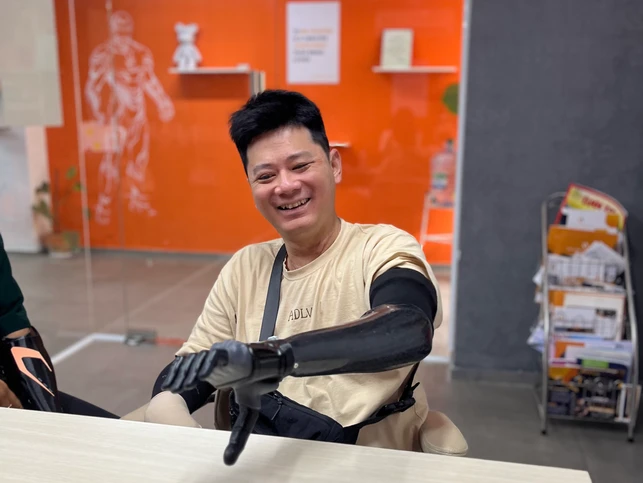Amputation is a life-changing event that can have profound physical and emotional impacts on individuals. If you need more guidelines to prepare yourself with amputated decisions, you can find them with our life before amputation sharing.

While many people consider life after amputation is simply finding a new routine to adapt to your new normal, we believe there are still certain challenges you will experience.
One such challenge faced by amputees is residual limb pain and phantom pain. Residual limb pain refers to discomfort or pain experienced in the remaining part of the amputated limb, while phantom pain refers to sensations of pain or discomfort felt in the missing limb. In this article, we will explore the causes, symptoms, and potential solutions for residual limb pain and phantom pain, offering hope and support for you adapting to life after amputation.

Residual Limb Pain
Residual limb pain is a common occurrence among amputees, and it can have a significant impact on their daily lives. This type of pain is often described as aching, burning, or throbbing sensations in the remaining part of the amputated limb. The causes of residual limb pain can vary, including nerve damage, scar tissue formation, and joint stiffness.
The physical discomfort caused by residual limb pain can make it difficult for you to perform daily activities and engage in hobbies or sports. It can also affect your sleep quality and overall quality of life. Furthermore, the emotional toll of living with chronic pain can lead to feelings of frustration, depression, and anxiety.
Residual Limb Pain Treatment
Fortunately, there are various treatment options available to alleviate residual limb pain. These can include over-the-counter or prescription medications, nerve blocks, physical therapy, and the use of assistive devices. Additionally, techniques such as massage, heat or cold therapy, and relaxation exercises can provide temporary relief and promote overall well-being.
Phantom Limb Pain
On the other hand, phantom pain refers to the sensation of pain or discomfort in the amputated limb, even though it no longer exists. This phenomenon can be perplexing and challenging to manage, as the causes of phantom pain are not fully understood and not all amputees have this kind of pain.

One theory suggests that phantom pain may arise from the brain’s attempt to reconcile the loss of sensory input from the amputated limb. The brain continues to send signals to the missing limb, resulting in the perception of pain. Additionally, nerve endings at the amputation site can become hypersensitive, further exacerbating phantom pain.
Phantom Limb Pain Treatment
It is essential to remember that each individual’s experience with phantom pain may differ, and what works for one person may not work for another. Therefore, it is crucial to work closely with your healthcare professionals to find the most effective management strategies for each individual.
Here are some common ways to manage phantom limb pain that you may want to consider:
- Using a warm towel or clean ice pack to cover the residual limb to ease it.
- Massaging is also a good way to calm the pain.
- Putting your prosthetic on (if you have) and doing a light stretching or exercise.
Limb Prosthetic Solution
Limb prosthetics provide you with a customized prosthetic that mimics the functionality of the missing limb. These advanced devices have evolved drastically, making everyday tasks more manageable and allowing you to engage in various physical activities.

At Vulcan, we offer our Vulcan Multi Grip Myoelectric Hand, a #bionic #hand with 6 different grips allowing you to perform a range of daily activities flexibly and effectively. To find out how it can support you, read here.




